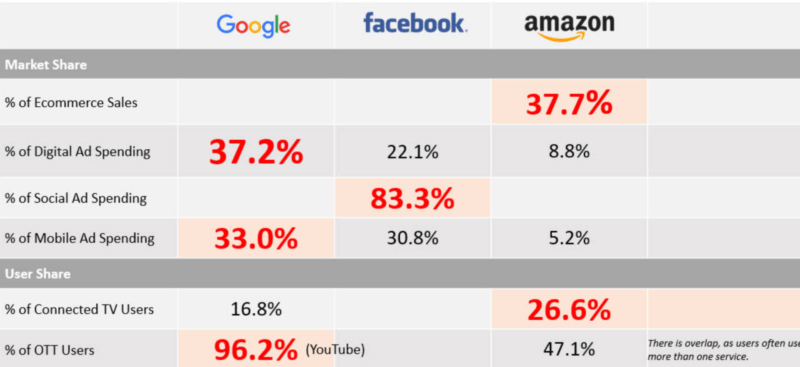How Subscription Models Can Actually Boost Ad Revenue
By Asaf Shamly | January 27, 2021

There was a time not too long ago when publishers in the digital media space relied almost entirely on selling ads to generate revenue. For the most heavily trafficked websites, business was good as people began to ditch print for digital and advertisers were eager to capture this growing audience.
However, over the past several years two tech giants have upended this revenue model: As Google and Facebook’s influence has grown across all digital media, the two companies now account for roughly 70% of all ad spending. This new reality has required publishers to rethink their business models, with an increasing number of websites – led by The New York Times – charging subscriptions and placing most of their content behind paywalls.

In other words, publishers are now relying on a model not too different from what’s always been utilized by traditional print publications, generating revenue through a combination of subscriptions and advertising. But there are challenges in trying to find the right balance between the two, especially because putting content behind paywalls could have a rippling effect: It can first drive away users, which will then drive away advertisers.
Here are some things to consider if you are new to the subscription business model.
Bringing in Paid Subscribers Will Bring in Advertisers
The good news for publishers is that over the past decade people have become more willing to pay for content on the internet, something that was almost unheard of in the 2000s. As Rob Williams, a contributing editor at MediaPost notes, The New York Times is “helping to train a generation of readers to pay for their news instead of enjoying the internet free-for-all of the past 25 years.”
While the NYT has helped reshape how we think about accessing our news online, the concept of paying for all of our content has also been helped by companies across all mediums of entertainment: Whether it’s Spotify or Apple Music; Netflix, Amazon Prime and Hulu; or even Amazon’s Kindle, people are getting used to paying for things they want to listen to, watch or read. We have accepted that high-quality content isn’t going to be free.
The important thing to note here is that the content has to be high quality in order for people to pay for it – and for ad buyers to therefore be interested in your inventory. One way to satisfy both readers and advertisers is to adopt a “metered model” like Wired magazine did in 2018.
Using a metered model means that Wired gives readers four free articles each month before the content goes behind a paywall, which “has allowed the publication to ‘strike a balance’ between its growing digital advertising and subscription businesses,” as Folio: points out.
“The metered approach has enabled us to deliver the inventory advertisers want while still giving readers a compelling reason to subscribe,” Scott Rosenfield, director of Wired, says in a Folio: interview.
Again, if the content is good, publishers will be able to convince more people to pay for unlimited access to the sites. And the more subscribers that publishers can bring to their site, the more advertisers are going to be interested in buying inventory.
Everyone Wins When You Know Your Audience
For both publishers and advertisers, the digital media landscape has both good news and bad news in terms of how users are responding to ads on websites. First, the good news: According to research last year from eMarketer, the growth of ad-blocking software has slowed; the bad news is that 1 in 4 internet users in the U.S. still utilized ad blockers in 2019.

And so, slowing growth is not the same thing as saying that ad blockers are going away. What this means is that while users are becoming more accepting of ads being a necessary part of a publisher’s revenue stream, there remains some pushback against the kinds of ads they are shown.
Here’s one way to think about the role ads play for both publishers and their readers: An estimated 4 trillion people across the globe are expected to shop online this year, with 300 million online shoppers in the U.S. alone expected by 2023. To put it in another way: If people around the globe are now regularly shopping online, they aren’t going to automatically be averse to seeing ads that appear on the websites they visit – and could actually be more inclined to click through them if they are relevant.
“People aren’t anti-advertising,” notes marketer Vanessa King of BuySellAds. “They’re anti-bad advertising.”
King suggests using a programmatic direct strategy (rather than just installing AdSense, for instance) because when advertisers book directly through the publishers then they “show that they understand the value of the audience, rather than pushing ads at anyone who matches a certain profile.”
Delivering High-Quality Content for Better Ads
Although publishers began moving to a subscription model as ad revenue started to decline, it’s important not to think of the former as replacing the latter. In fact, when publishers balance subscriptions with advertising – and deliver the high-quality content that both users and advertisers want to see – it’s possible to improve the ads on your site by having readers who are paying for the content.
“It may seem counterintuitive, but subscription models can, in fact, raise ad revenues over the long term — but only if publishing teams are using data and agile tools to strike the right balance between the two revenue streams,” according to Tobias Arns of Cxense.
Arns notes that a subscription team’s first priority “is often determining which kind of content drives subscriptions — and which doesn’t.” By learning about your audience through the content it likes, you can provide your subscribers with better-curated ads that would be more likely to generate impressions.
“What [subscribers] expect is premium content, member exclusives and better-curated ads,” Arns explains. “Publishers who collect, organize and analyze subscriber data in a [data management platform] can use that data to deliver more relevant ads sitewide.”
Nordjyske Medier, an online publication in Denmark, “strategically deploys its advertising to increase quality and effectiveness for advertisers and command higher prices for campaigns.” Jesper Johansen, the online marketing manager for Nordjyske Medier, tells Arns that the company “has increased click-through rates by 300 percent on average — while digital subscriptions grew by 50 percent in the same period.”
Combining Two Business Models
The days you could generate all of your revenue through advertising are likely over for most publishers, especially as Google and Facebook’s market share continues to grow. But by offering premium content through a subscription model, you can deliver the content that your subscribers want to see and better curate the ads that they would be more likely to click through.
Latest Articles
-

What the RSL Standard Signals About the Future of Visibility in 2026
When Reddit, Yahoo, Medium, and several of the web’s biggest content platforms announced a new Really Simple Licensing (RSL) standard, most coverage focused on the politics: platforms finally demanding compensation from AI companies; a new legal framework for training data; the good old open-web fight. But if you take one step back, something bigger comes into focus. For the first time, publishers are trying to engineer visibility - not for users, but for AI agents. And advertisers should be paying attention.
View Now -

When the Pipes Change, So Do the Rules: What OpenAds and AdCP Signal for Advertisers
Programmatic’s foundations are shifting. As control moves closer to publishers and planning logic becomes more open and inspectable, two developments - OpenAds and AdCP - are redefining how ad decisions are made. Together, they signal a new era where fewer intermediaries, clearer signals, and transparent coordination reshape the rules for advertisers.
View Now -

When AI Becomes the Storefront, Advertisers Need to See Beyond the Chat Window
ChatGPT Shopping quietly introduced a massive shift: AI is becoming the new storefront. Discovery, comparison, and checkout now happen inside a single conversation - no website required. For advertisers, this means visibility depends on how well their message can be interpreted, ranked, and surfaced by AI systems that control attention.
View Now
